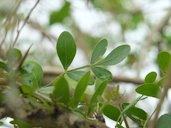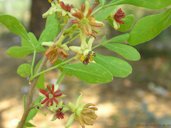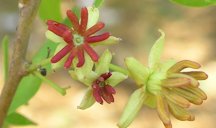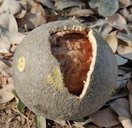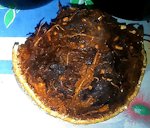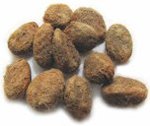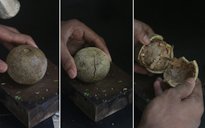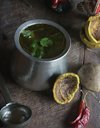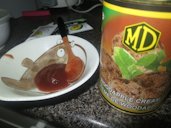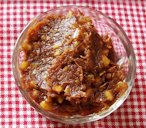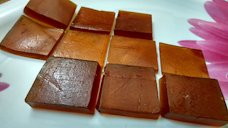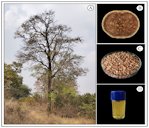| Wood-Apple - Limonia acidissima | |||||||||||||||||||||||||||||||||||||||||||||
|---|---|---|---|---|---|---|---|---|---|---|---|---|---|---|---|---|---|---|---|---|---|---|---|---|---|---|---|---|---|---|---|---|---|---|---|---|---|---|---|---|---|---|---|---|---|
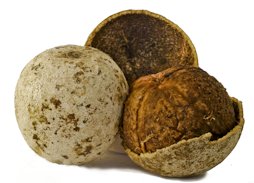 Fig. 1  Wood Apple - Limonia acidissima 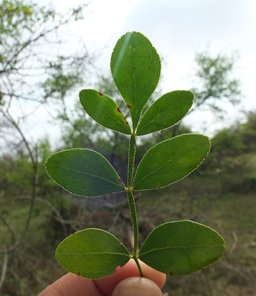 Fig. 2  L. acidissima, Nilgiris, Tamil Nadu, India 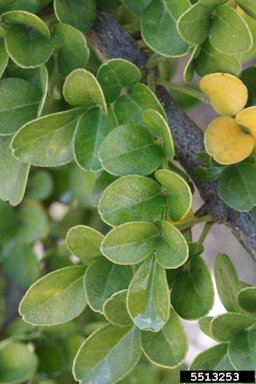 Fig. 3  Elephant (F. limonia cv. Elephant), foliage 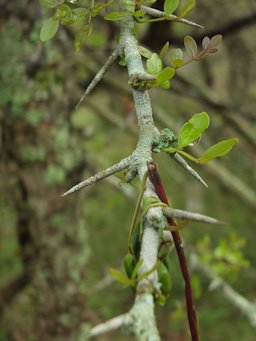 Fig. 4  L. acidissima, Nilgiris, Tamil Nadu, India 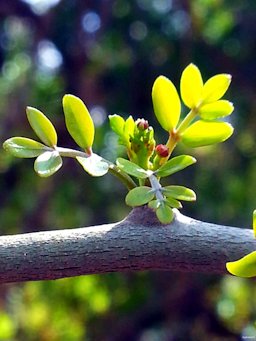 Fig. 9  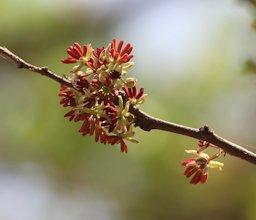 Fig. 10  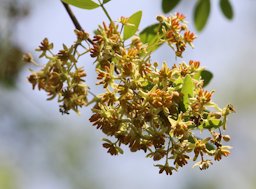 Fig. 11  L. acidissima 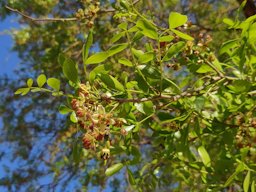 Fig. 12  L. acidissima, Bodabandla, Andhra Pradesh, India 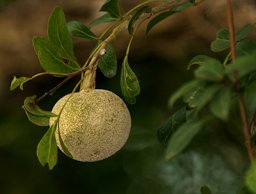 Fig. 15  Wood-apple L. acidissima syn. L. elephantum at Talakona forest, in Chittoor District of Andhra Pradesh, India 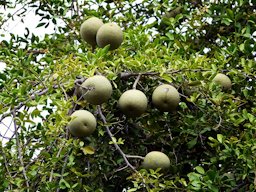 Fig. 16  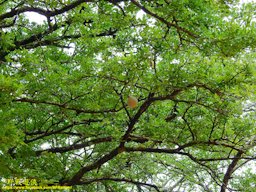 Fig. 17  L. acidissima, Matale, Sri Lanka 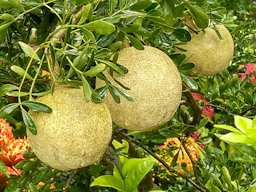 Fig. 18  L. acidissima (wood apple) with leaves, National Tree Fair 2018, at Sher-e-Bangla Nagar, Dhaka, Bangladesh 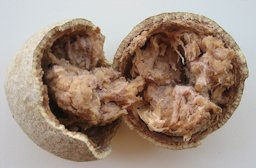 Fig. 19  Wood-apple purchased from market in Pune, India 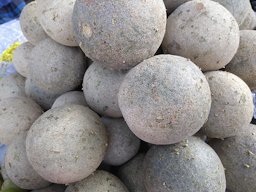 Fig. 20 Fig. 20Woodapple fruit, L. acidissima 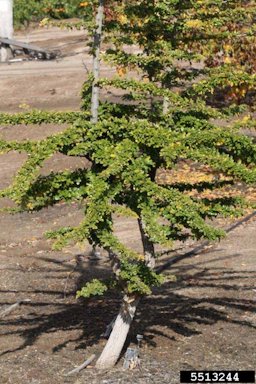 Fig. 30  Elephant (F. limonia cv. Elephant) plant zigzag habit 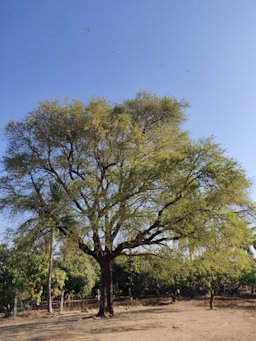 Fig. 31  L. acidissima, Bodabandla, Andhra Pradesh, India 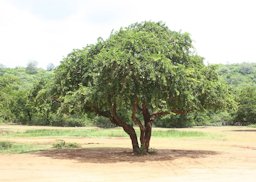 Fig. 32  Wood-apple tree in Trincomalee, Sri Lanka 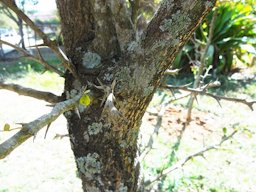 Fig. 33  F. elephantum tree, a medicinal plant 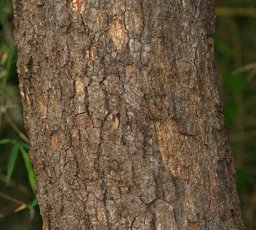 Fig. 34 Wood-apple at Talakona forest, in Chittoor District of Andhra Pradesh, India 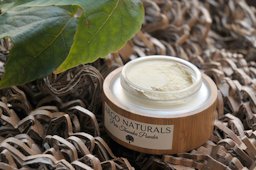 Fig. 36  Thanaka powder  Fig. 37  A Burmese Hindu woman wearing thanaka, Yangon Myanmar 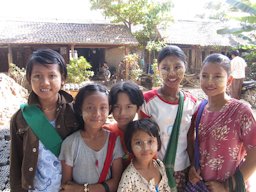 Fig. 38  Village girls wearing thanaka at Ava, Burma 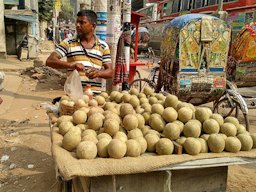 Fig. 42  Hawker selling wood apples in Dhaka, Bangladesh 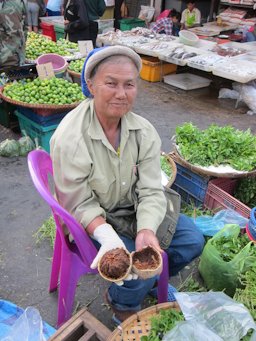 Fig. 43  Wood apple Thailand |
Scientific
name Limonia acidissima L. Common names English: curd fruit, elephant apple, indian wood-apple, monkey fruit, wood apple; Arabic: tuffâhh el fîl; Bangladesh: kath bel; Burmese: thibin, thanaka, tha nap-hka; Chinese: mu ping guo, mu ping kuo; Danish: elefantæble; Dutch: olifants appel; Fiji: kabeet, kabut, vellam pelam, vakandra (Hindu); French: citron des mois, citronnier des éléphants, féronie de l’Inde, pomme de bois, pomme des éléphants, pommier d’éléphant; German: Elefantenapfel 1 Other common names Synonyms Schinus limonia L., Crateva balangas K.D.Koenig, C. vallanga J.Koenig ex Wight & Arn., Anisifolium curvispina (Miq.) Kuntze, A. limonia Kuntze, A. spectabile (Miq.) Kuntze, Feronia balanghas (K.D.Koenig) Steud., F. elephantum Corrêa, F. limonia (L.) Swingle, Hesperethusa acidissima (L.) M.Roem., H. ambigua M.Roem., Limonia ambigua DC., L. curvispina Miq., L. dulcis J.F.Gmel., L. elephantum (Corrêa) Panigrahi, L. engleriana Perkins, L. pinnatifolia Houtt., L. spectabilis Miq., Murraya odorata Blanco 8 Relatives Bael fruit (Aegle marmelos), distant relative of all citrus species; kumquat (Fortunella spp.); white sapote (Casimiroa edulis) Family Rutaceae (citrus family) Origin Indigenous to the Indian subcontinent and Sri Lanka 1 USDA hardiness zones Tropical and subtropical 5 Uses Fruit; medicinal; cosmetics; ornamental Height To 40 ft (12 m) 4 Plant habit Erect; few thorny branches that bend outwards near the top; subdivided into slender branchlets drooping at the tips 2 Growth rate Slow growing 2 Trunk/bark/branches Dark grey bark is rough, furrowed, scaly; ¾ to 2 in. (2–5 cm) long spines on the zigzag twigs 2,3 Leaves Deciduous (often evergreen in tropical climates); alternate; dark-green; leathery; dotted with oil glands; slightly lemon-scented when crushed 3 Flowers Dull-red or greenish to ½ in. (1.25 cm) wide; borne in small, loose, terminal or lateral panicles; usually bisexual 3 Fruit Berry; hard-shelled; up to 4 in. (10 cm); whitish scurfy surface; pinkish, aromatic pulp containing numerous, slimy seeds 4 Season Malaya: Oct., Nov.; India: Oct. through Mar. 3 Soil tolerances Best adapted to light soils 3 Drought tolerance Tolerant Invasive potential * None reported Known hazard Sharp spines (Fig. 4) Reading Material The Wood-Apple, Fruits of Warm Climates Limonia acidissima, PROSEA Foundation Feronia limona, Agroforestree Database Origin Wood apple occurs naturally in India, Sri Lanka, Burma and Indo-China, where it is limited to the drier regions. It is cultivated in villages and parks throughout its natural range, and in Malaysia and Indonesia (Java, Bali) where it has even become naturalized (western Java). It was introduced long ago into the United States (California, Florida) for experimental purposes. 4 Description Wood apple, Feronia limonia (L.) Swingle (Rutaceae), is a monotypic genus with two forms: one has large, sweet fruit and the other small, acid fruit. The species is native and common in southern India and Sri Lanka. It is also frequently grown throughout South-east Asia, in northern Malaysia and on Penang Island. In India, the fruit was traditionally a ‘poor man’s food’ until processing techniques were developed in the mid-1950s. 2 Leaves/Stems Leaves up to 4.7 in. (12 cm) long, imparipinnate with narrowly winged rachis and petiole; leaflets opposite in 2-3 pairs and a terminal one, obovate, up to 1.6 in. (4 cm) long, dotted with oil glands and faintly aromatic when crushed. 4
Fig. 5. Elephant (F. limonia cv. Elephant), first year twig Fig. 6. Second - third year twig Fig. 7. Close-up rhachis Fig. 8. L. acidissima, Nilgiris, Tamil Nadu, India Flowers Staminate and perfect flowers, 5-merous, white, green or reddish-purplish, usually together in lax, terminal or axillary inflorescences. 4 The panicles occur generally on new shoots. The flowers can also be a mixture of staminate and hermaphrodite. 2
Fig. 13,14. L. acidissima and close-up Fruit The fruit is round to oval, 2 to 5 in (5-12.5 cm) wide, with a hard, woody, grayish-white, scurfy rind about 1/4 in (6 mm) thick. The pulp is brown, mealy, odorous, resinous, astringent, acid or sweetish, with numerous small, white seeds scattered through it. 3 Seeds 0.2-0.24 in. (5-6 mm) long, hairy, with thick, green cotyledons; germination epigeal. 4 In Malaya, the leaves are shed in January, flowering occurs in February and March, and the fruit matures in October and November. In India, the fruit ripens from early October through March. 3
Varieties There are 2 forms, one with large, sweetish fruits; one with small, acid fruits. 3 Harvesting The fruit is tested for maturity by dropping onto a hard surface from a height of 1 ft (30 cm). Immature fruits bounce, while mature fruits do not. After harvest, the fruit is kept in the sun for 2 weeks to fully ripen. 3 Whole, unopened Buah Kawista can be kept at room temperature for up to 10 days or stored in the refrigerator for 1 to 2 months. Once opened, the flesh should be consumed immediately for the best quality. Buah Kawista can also be frozen in a mixture of lemon juice for up to six months. 9 Pollination The crop is highly cross-pollinated by insects. 2 Propagation The wood-apple is generally grown from seeds though seedlings will not bear fruit until at least 15 years old. 3 Seeds germinate after 2-3 weeks in the nursery; 80% germination may be achieved for seed stored for several weeks. Buds from mature wood grafted onto seedlings are said to result in dwarf trees which fruit early. 4 Vegetatively propagated trees flower in 3 years. 2 Culture Wood-apple thrives in a monsoonal or seasonally dry tropical climate. It is found on a wide diversity of soils from sea level to 450 m altitude. It is best adapted to light soils and is tolerant to drought and mild water-logging. 1 Food Uses The hard rind of the ripe fruit must be cracked open with a hammer and the pulp scooped out. The pulp is eaten raw with or without sugar, or is blended with coconut milk and palm-sugar syrup. 3 In Indonesia, the pulp is beaten with pal suagra and eaten at breakfast. The pulp can also be processed and drunk as a beverage or sherbet, or frozen as an ice cream. Ripe fruit juice is a good health drink and provides a rich source of anti- oxidants. The pulp is also made into chutney, preserves, jelly, marmalade, jams or processed into treacle or toffee. In Sri Lanka, wood apple cream is processed from the fruit pulp and is canned and exported. Young leaves, tender shoots and ripe fruits are also eaten fresh in Thailand. 1 The jelly is purple and much like that made from black currants. 3 A bottled nectar is made by diluting the pulp with water, passing through a pulper to remove seeds and fiber, further diluting, straining, and pasteurizing. A clear juice for blending with other fruit juices, has been obtained by clarifying the nectar with Pectinol R-10. Pulp sweetened with sirup of cane or palm sugar, has been canned and sterilized. The pulp can be freeze-dried for future use but it has not been satisfactorily dried by other methods. 3 In the city of Rembang in Central Java, Buah Kawista is famously processed into a sticky, brown syrup known as Kawis syrup (Fig. 24). Rembang’s climate is well-suited for Buah Kawista, and the majority of the Kawista trees are planted in the home gardens of Rembang residents. Buah Kawista is considered a rare fruit in the rest of Indonesia and has been processed into syrup in Rembang since 1925, sold as a favored souvenir. Many Indonesians travel to Rembang solely to purchase the dark brown syrup, and there are multiple producers, with the most famous being Cap Dewa Burung. Buah Kawista contributes a complex blend of sugary, sweet, and sour flavors, and the syrup is often likened to the taste of carbonated colas. Kawista syrup is primarily served over ice and is nicknamed the Javanese cola. 9
Fig. 24. Bottled syrup made of wood-apple juice. Rembang, Central Java Fig. 25. Vilampazham, wood apple Fig. 26. Vilampazham Rasam, wood apple rasam Fig. 27. Wood apple cream from Sri Lanka Fig. 28. Hot, sweet, sour and TURAT chutney made from pulp of wood apple Fig. 29. Jelly of Vilvam (L. acidissima) fruit.
Nutrient Content The pulp represents 36% of the whole fruit. The pectin content of the pulp is 3 to 5% (16% yield on dry-weight basis). Per 100 g edible portion, the approximate contents of the pulp are: water 74 g, protein 8 g, fat 1.5 g, carbohydrates 7.5 g, ash 5 g. The seeds contain per 100 g edible portion: water 4 g, protein 26 g, fat 27 g, carbohydrates 35 g and ash 5 g. The seeds contain a bland, non-bitter, oil high in unsaturated fatty acids. The dried pulp contains 15% citric acid and small quantities of potassium, calcium and iron salts 3,4 Medicinal Properties ** The tree is one of the most useful medicinal plants in India. The powdered gum, mixed with honey, is given to overcome dysentery and diarrhoea in children. The fruit is used in India as a liver and cardiac tonic. Unripe fruit are used as a means of halting diarrhoea and dysentery and as an effective treatment for hiccough, sore throat and gum diseases. The pulp is poulticed onto bites and stings of venomous insects, as is the powdered rind. Juice of young leaves is mixed with milk and sugar candy and given as a remedy for biliousness and intestinal troubles of children. Leaf oil is applied to alleviate itching and the leaf decoction is given to children as an aid to digestion. The spines and bark are crushed and an infusion taken as a remedy for excess menstruation, liver disorders, bites and stings. 2 Other Uses The rind of the fruit is so thick and hard it can be carved and used as a utensil such as a bowl or ashtray. The tree has hard wood which can be used for woodworking. The timber is employed in the construction of houses, posts, rollers for mills, hubs and agricultural implements. The wood also serves as fuel-wood. The leaves are lopped for fodder. In Thailand the plant also has been used as root-stock for Citrus because of its water tolerance. The bark also produces an edible gum. Seeds contain a bland, non-bitter, oil high in unsaturated fatty acids. 1 The wood is yellow-grey or whitish, hard, heavy and durable. The trunk and branches exude a white, transparent gum that is used as a substitute or as an adulterant of gum arabic. The gum is also used to make artists’ watercolours, ink, dyes and varnish. The gum consists of 35.5% arabinose and xylose, 42.7% d-galactose, and traces of rhamnose and glucuronic acid. 2
Fig. 35. Wood apple (L. acidissima L.)-Tree (A), (B), Fruit (B), (C), Seeds and Oil (D) The seed is a remarkably good source to obtain essential fats and for cooking and frying. The presence of tocopherol in the seed oil indicated its potential as a good source for scavenging the free radicals. Nutritional and nutraceutical analysis of seed cake revealed a rich content of protein, carbohydrate, and total phenols, which are helpful in maintaining good health. The utilization of such underutilized fruit seeds facilitates an extra economic benefit to the local people. 11 Thanaka In Myanmar, Burmese girls and women have been using the finely ground bark of the Thanaka tree for many centuries to make a beautifying and skin-protecting cream simply called Thanaka. The gold-coloured Thanaka is offered in all markets in Myanmar and is used by young and old. 6 The tree itself is very slow growing, needing at least 15 years to produce fruits and more than 35 years before the bark can be harvested for the production of thanaka paste. 10 Traditionally, Thanaka is applied as a face mask by grinding the bark, wood, or roots of the Thanaka tree with a small amount of water on a circular stone slab called kyauk pyin (Fig. 40) to form a liquid paste. 6 The natural ingredients of the Thanaka help the skin to naturally protect itself from harmful UV rays and reduce the loss of moisture. Furthermore a study by the University of London and Bangkok has found out that the high concentration of antioxidants and the barks anti-inflammatory properties rejuvenate the facial skin. 6 The wood of several trees may be used to produce thanaka cream; these trees grow abundantly in central Myanmar. They include principally Murraya spp. (thanaka) but also Limonia acidissima (theethee or wood apple). 7
Fig. 39. Vente de thanaka sur un marché en Birmanie Fig. 40. Kyauk pyin stone slabs for grinding thanaka at a pagoda market in Sagaing Fig. 41. Girl wearing Thanaka paste in Yangon, Myanmar
General Wood-Apple has recently become an economically important commodity in Sri Lanka where wood apple cream is canned and exported. 4 Wood apple is likely to remain an underutilized resource in South-East Asia, despite its status as an export commodity in Sri Lanka. The tree is only found in home gardens in the drier parts of South-East Asia and the fruit is not used much. There appears to be little interest in other potential uses (source of gum, dwarfing rootstock, breeding work) either. 4 Further Reading Fatty Acid Profile, Tocopherol Content of Seed Oil, and Nutritional Analysis of Seed Cake of Wood Apple (Limonia acidissima L.), an Underutilized Fruit-Yielding Tree Species, Horticulturae pdf List of Growers and Vendors |
||||||||||||||||||||||||||||||||||||||||||||
| Bibliography 1 Lim, T. K. "Edible medicinal and non-medicinal plants, Fruits, vol. 4." ZLibrary, 2012, b-ok.cc/book/5859961/fc985e. Accessed 23 Dec. 2021. 2 The Encyclopedia of Fruit & Nuts. Edited by Jules Janick and Robert E. Paull, Cambridge, CABI, 2008. 3 Fruits of Warm Climates. Julia F. Morton. Miami, 1987. 4 Jones, D. T. "Limonia acidissima L." Edible fruits and nuts, Plant Resources of South-East Asia No 2, Edited by E. W. M. Verheij, and R. E. Coronel, PROSEA Foundation, Bogor, Indonesia, record 1514, 1991, PROSEA, (CC BY-NC-SA 3.0), www.prota4u.org/prosea/view.aspx?id=1514. Accessed 27 Dec. 2021. 5 Orwa, C., et al. "Feronia limona (L.) Swingle." Agroforestree Database: a tree reference and selection guide, version 4.0., 2009, Agroforestry, apps.worldagroforestry.org/treedb2/speciesprofile.php?Spid=18044. Accessed 27 Dec. 2021. 6 "Thanaka - The ancient Beauty Secret." Thanaka, thanaka.net/. Accessed 27 Dec. 2021. 7 "Thanaka." Wikipedia, en.wikipedia.org/wiki/Thanaka. Accessed 27 Dec. 2021. 8 "Limonia acidissima L. synonyms." The International Plant Names Index and World Checklist of Selected Plant Families 2021, Plants of the World Online, Royal Botanic Gardens Kew, powo.science.kew.org/taxon/urn:lsid:ipni.org:names:774113-1. Accessed 27 Dec. 2021. 9 "Buah Kawista Fruit." Specialty Produce, specialtyproduce.com/produce/Buah_Kawista_Fruit_20695.php. Accessed 27 Dec. 2021. 10 Blancke, Rolf. "Tropical Fruits and Other Edible Plants of the World: An Illustrated Guide." Zlibrary, 2016, b-ok.cc/book/3414166/f1bf9d?dsource=recommend. Accessed 30 Dec. 2021. 11 Lamani S., et al. "Fatty Acid Profile, Tocopherol Content of Seed Oil, and Nutritional Analysis of Seed Cake of Wood Apple (Limonia acidissima L.), an Underutilized Fruit-Yielding Tree Species." Horticulturae, 7(9):275, 2021, MDPI, (CC BY 4.0), doi.org/10.3390/horticulturae7090275. Accessed 30 Dec. 2021. Videos V1 Wiens, Mark. "Eating a Wood Apple: Delicious Fruit with a Funky Smell!", Migrationology, 21 Jan. 2012, (CC0), www.youtube.com/watch?v=XdHIwR5fIYQ. Accessed 31 Dec. 2021. v2 "Thanaka, Myanmar's Magical Makeup." Coconut TV, 27 Feb. 2019, (CC0), www.youtube.com/watch?v=cVV7ikkv2fY. Accessed 28 Dec. 2021. Photographs Fig. 1 Issadeen, Hafiz, (YIM Hafiz). "Wood Apple - Limonia acidissima." Flickr, 19 Aug. 2010, (CC BY 2.0), www.flickr.com/photos/yimhafiz/4904555171/in/photostream. Accessed 27 Dec. 2021. Fig. 2,4,8 Machado, Siddarth. "Limonia acidissima, Nilgiris, Tamil Nadu, India." iNaturalist, Research Grade, 4 Feb. 2020, (CC BY-NC 4.0), www.inaturalist.org/observations/38292190. Accessed 30 Dec. 2021. Fig. 3 "Elephant (Feronia limonia cv. Elephant), foliage." NCSC Herbarium, Citrus ID, USDA APHIS PPQ, no. 5513253, 31 July 2014, Bugwood.org, (CC BY-NC 3.0 US), www.insectimages.org/browse/detail.cfm?imgnum=5513253. Accessed 27 Dec. 2021. Fig. 5 "Elephant (Feronia limonia cv. Elephant), first year twig." NCSC Herbarium, Citrus ID, USDA APHIS PPQ, no. 5513248, 23 July 2014, Bugwood.org, (CC BY-NC 3.0 US), www.insectimages.org/browse/detail.cfm?imgnum=5513248. Accessed 27 Dec. 2021. Fig. 6 "Elephant (Feronia limonia cv. Elephant), second - third year twig." NCSC Herbarium, Citrus ID, USDA APHIS PPQ, no. 5513247, 31 July 2014, Bugwood.org, (CC BY-NC 3.0 US), www.insectimages.org/browse/detail.cfm?imgnum=5513247. Accessed 27 Dec. 2021. Fig. 7 "Elephant (Feronia limonia cv. Elephant), close-up rhachis." NCSC Herbarium, Citrus ID, USDA APHIS PPQ, no. 5513258, 31 July 2014, Bugwood.org, (CC BY-NC 3.0 US), www.insectimages.org/browse/detail.cfm?imgnum=5513258. Accessed 27 Dec. 2021. Fig. 9 tspkumar. "Limonia acidissima." Efloraofindia (2007 onwards), Database of Indian Plants - developed by the members of Efloraofindia Google Group, (CC BY), sites.google.com/site/efloraofindia/species/m---z/r/rutaceae/limonia/limonia-acidissima. Accessed 31 Dec. 2021. Fig. 10 Haneesh K. M. "Limonia acidissima." Wikimedia Commons, 11 March 2018, (CC BY-SA 4.0), commons.wikimedia.org/wiki/File:Limonia_acidissima_2.jpg. Accessed 27 Dec. 2021. Fig. 11 Haneesh K. M. "Limonia acidissima." Wikimedia Commons, 11 March 2018, (CC BY-SA 4.0), commons.wikimedia.org/wiki/File:Limonia_acidissima_1.jpg. Accessed 27 Dec. 2021. Fig. 12,21,31 Raman, T R Shankar. "Limonia acidissima, Bodabandla, Andhra Pradesh, India." iNaturalist, Research Grade, 19 Mar. 2021, (CC BY-NC 4.0), www.inaturalist.org/observations/71536890. Accessed 30 Dec. 2021. Fig. 13,14 Lalithamba. "Limonia acidissima L. (Wood apple)." Flickr, 8 June 2010, (CC BY 2.0), www.flickr.com/photos/45835639@N04/4681906810/. Accessed 30 Dec. 2021. Fig. 15 Garg, G. M. "Wood-apple Limonia acidissima syn. Limonia elephantum at Talakona forest, in Chittoor District of Andhra Pradesh, India." Wikimedia Commons, 16 Aug. 2008, (CC BY-SA 4.0), (GFDL),s commons.wikimedia.org/wiki/File:Limonia_acidissima_syn_Limonia_elephantum_or_Fernonia_limonia_(wood-apple)_in_Talakona_ forest,_AP_W_IMG_8333.jpg. Accessed 27 Dec. 2021. Fig. 16 Johnsingh, A. J. T. "Feronia elephantum in Panna TR." WikiProject Nature and conservation in India, 26 May 2008, Wikimedia Commons, (CC BY-SA 4.0), commons.wikimedia.org/wiki/Category:Limonia_acidissima#/media/File:Feronia_elephantum_PannaTR.jpg. Accessed 27 Dec. 2021. Fig. 17 Lin, Kinmatsu. "Limonia acidissima, Matale, Sri Lanka." iNaturalist, Research Grade, 11 Jan. 2019, (CC BY-NC 4.0), www.inaturalist.org/observations/19568956. Accessed 30 Dec. 2021. Fig. 18 Khandoker, Salim."Limonia acidissima (Wood apple) with leaves, National Tree Fair 2018, at Sher-e-Bangla Nagar, Dhaka, Bangladesh." Wikimedia Commons, 22 July 2018, (CC BY-SA 3.0), commons.wikimedia.org/wiki/File:Limonia_acidissima_in_Bangladesh_2.jpg. Accessed 27 Dec. 2021. Fig. 19 Seisfeldt. "Picture of Wood-apple purchased from market in Pune, India." English Wikipedia, 1 Dec. 2009, Wikimedia Commons, Public Domain, commons.wikimedia.org/wiki/File:Wood-apple_dec2007.jpg. Accessed 27 Dec. 2021. Fig. 20 Maari, Thamizhpparithi. "Woodapple fruit, Limonia acidissima." Wikimedia Commons, 7 Nov. 2020, (CC BY-SA 4.0), commons.wikimedia.org/wiki/File:Limonia_acidissima_of_Salem.jpg. Accessed 27 Dec. 2021. Fig. 22 Kembangraps. "Buah kawista (Limonia acidissima) dikupas sebagian kulit, memperlihatkan isinya." Wikimedia Commons, 8 Aug. 2015, (CC BY-SA 4.0), Image cropped, commons.wikimedia.org/w/index.php?curid=42184228. Accessed 31 Dec. 2021. Fig. 23 Vattakaven, Thomas. "Limonia acidissima L." India Biodiversity Portal, (CC BY 2.0), ../../about_us/credits.htm#WikemediaCommons/species/show/31505. Accessed 30 Dec. 2021. Fig. 24 Kembangraps. "Bottled syrup made of wood-apple juice. Rembang, Central Java." Wikimedia Commons, 8 Aug. 2015, (CC BY-SA 4.0), Image cropped, commons.wikimedia.org/wiki/File:Sirup_kawista_Pj.JPG. Accessed 27 Dec. 2021. Fig. 25,26 Deepa. "Vilampazham Rasam, wood apple rasam." Pâticheri, 5 Jan. 2021, (CC BY-NC 4.0), www.paticheri.com/2021/01/05/vilampazham-rasam-wood-apple-rasam/. Accessed 30 Dec. 2021. Fig. 27 Tam3tree. "Wood apple cream from Sri Lanka." Wikimedia Commons, 17 June 2017, (CC BY-SA 4.0), commons.wikimedia.org/wiki/File:Wood_apple_cream.jpg. Accessed 31 Dec. 2021. Fig. 28 prabhune, Sulabha. "Hot, sweet, sour and TURAT chutney made from pulp of Wood Apple." Wikimedia Commons, 19 Nov. 2014, (CC BY-SA 4.0), commons.wikimedia.org/wiki/File:Kawathhachi_Chatani.jpg. Accessed 31 Dec. 2021. Fig. 29 Maari, Thamizhpparithi. "Jelly of Vilvam (Limonia_acidissima) fruit." Wikimedia Commons, 30 May 2015, (CC BY-SA 4.0), commons.wikimedia.org/wiki/File:Jelly_of_Vilvam_(Limonia_acidissima)_fruit.jpg. Accessed 31 Dec. 2021. Fig. 30 "Elephant (Feronia limonia cv. Elephant)." NCSC Herbarium, Citrus ID, USDA APHIS PPQ, no. 5513244, 23 July 2014, Bugwood.org, (CC BY-NC 3.0 US), www.insectimages.org/browse/detail.cfm?imgnum=5513244. Accessed 27 Dec. 2021. Fig. 32 AntanO. "Wood-apple tree in Trincomalee, Sri Lanka." Wikimedia Commons, 16 Sept. 2014, (CC BY-NC-ND 3.0), Image cropped, commons.wikimedia.org/wiki/File:Wood-apple_tree.JPG. Accessed 27 Dec. 2021. Fig. 33 VASANTH S. N. "Feronia elephantum tree. A medicinal plant.." Wikimedia Commons, 22 Jan. 2014, (CC BY-SA 3.0), commons.wikimedia.org/wiki/File:Feronia_Elephantum_tree.JPG. Accessed 27 Dec. 2021. Fig. 34 Garg, G. M. "Wood-apple Limonia acidissima syn. Limonia elephantum at Talakona forest, in Chittoor District of Andhra Pradesh, India." Wikimedia Commons, 16 Aug. 2008, (CC BY-SA 4.0), (GFDL), commons.wikimedia.org/wiki/File:Limonia_acidissima_syn_Limonia_elephantum_or_Fernonia_limonia_(wood-apple)_in_Talakona_ forest,_AP_W_IMG_8335.jpg. Accessed 27 Dec. 2021. Fig. 35 Lamani S., et al. "Wood apple (Limonia acidissima L.)-Tree (A), (B), Fruit (B), (C), Seeds and Oil (D)." Fatty Acid Profile, Tocopherol Content of Seed Oil, and Nutritional Analysis of Seed Cake of Wood Apple (Limonia acidissima L.), an Underutilized Fruit-Yielding Tree Species, Horticulturae, 7(9):275, 2021, MDPI, doi.org/10.3390/horticulturae7090275. Accessed 30 Dec. 2021. Fig. 36 Kathrinatina23. "Thanaka powder." Wikimedia Commons, 1 Sept. 2014, (CC BY-SA 4.0), commons.wikimedia.org/wiki/File:Thanaka_powder.jpg. Accessed 27 Dec. 2021. Fig. 37 Arps, Paul. "A Burmese Hindu woman wearing thanaka, Yangon Myanmar." Flickr, 13 Dec. 2013, (CC BY 2.0), www.flickr.com/photos/slapers/11737504803. Accessed 27 Dec. 2021. Fig. 38 Wagaung. "Village girls wearing thanaka at Ava, Burma." Wikimedia Commons, 14 Nov. 2009, (CC BY-SA 3.0), commons.wikimedia.org/wiki/Thanaka#/media/File:Thanaka_girls.JPG. Accessed 27 Dec. 2021. Fig. 39 Ansel, Jean-Luc. "Vente de thanaka sur un marché en Birmanie." Wikimedia Commons, 21 Feb. 2006, (CC BY-SA 4.0), commons.wikimedia.org/wiki/File:Limonia_acidissima_en_vente.jpg. Accessed 27 Dec. 2021. Fig. 40 Wagaung. "Kyauk pyin stone slabs for grinding thanaka at a pagoda market in Sagaing." Wikimedia Commons, 9 Nov. 2008, (CC BY-SA 3.0), commons.wikimedia.org/wiki/Thanaka#/media/File:Thanaka_kyaukpyin.JPG. Accessed 27 Dec. 2021. Fig. 41 Yakubovich, Ilya. "Girl wearing Thanaka paste in Yangon, Myanmar." Wikimedia Commons, 1 Dec. 2017, (CC BY-SA 4.0), commons.wikimedia.org/wiki/File:Girl_wearing_Thanaka_paste_in_Yangon,_Myanmar.jpg. Accessed 27 Dec. 2021. Fig. 42 Khandoker, Salim."Limonia acidissima (Wood apple) with leaves, National Tree Fair 2018, at Sher-e-Bangla Nagar, Dhaka, Bangladesh." Wikimedia Commons, 22 July 2018, (CC BY-SA 3.0), commons.wikimedia.org/wiki/File:Limonia_acidissima_in_Bangladesh_2.jpg. Accessed 27 Dec. 2021. Fig. 43 fruitGloss. "Wood Apple Thailand." Flickr, 28 Dec. 2020, (CC BY-ND 2.0), www.flickr.com/photos/7398698@N08/14655022301. Accessed 1 Jan. 2022. * UF/IFAS Assessment of Non-native Plants in Florida's Natural Areas ** Information provided is not intended to be used as a guide for treatment of medical conditions. Published 1 Jan. 2022 LR |
|||||||||||||||||||||||||||||||||||||||||||||



